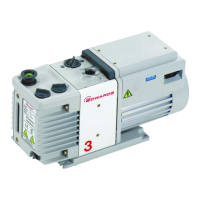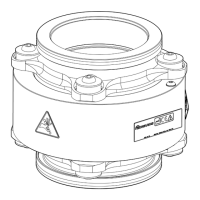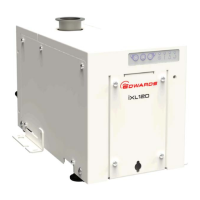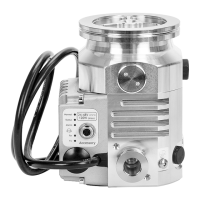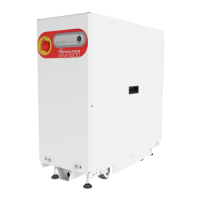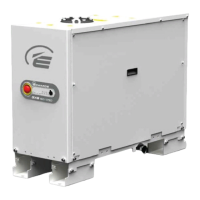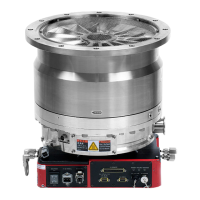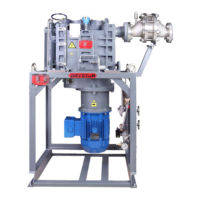A708-01-880 Issue E
Page 2 © Edwards Limited 2013. All rights reserved.
Edwards and the Edwards logo are trademarks of Edwards Limited.
Introduction
1.2 Description
The CDX and IDX pumps are rugged, reliable dry vacuum pumps designed specifically for use in the chemical and
pharmaceutical industries, and in industrial processing applications.
The CDX and IDX pumps are single stage pumps which use the screw principle, in which a pair of intermeshing, non-
contacting rotors are held in correct phase relation by a pair of timing-gears. The gears and the double-row angular
contact ball bearings are oil lubricated.
The double-ended design means that the bearings, seals and gearbox remain at atmospheric pressure, and that axial
loading on the bearings is minimal.
1.3 Shaft-seals purge system
Refer to Figure 1, 2 and 3, detail C. The shaft-seals purge pipelines (24) deliver an air or nitrogen purge to the shaft-
seals. This purge:
z Ensures that the shaft-seals are maintained at a positive pressure during pump operation.
z Prevents the entry of corrosive or toxic process vapours into the pump gearbox.
z Prevents contamination of the process gases by pump oil.
z Prevents damage to the shaft-seals by debris.
Note: Accessory kits are available to provide gas ballast, inlet and exhaust purge facilities on the pump: refer
to Section 7.4.
1.4 Air bleed - IDX1300 only
Blockage of the air bleed intake and/or the filter element will lead to seizure of the pump.
Refer to Figure 2. The IDX1300 is fitted with a permanent atmospheric air bleed at each end of the pump.
Refer to Section 5.16 for details of how to clean/replace the filter element.
1.5 Temperature control system
Refer to Figure 1, 2 and 3. The CDX and IDX pumps have an indirect cooling system. A coolant circulation pump (driven
by the vacuum pump mechanism) circulates secondary coolant, in a closed loop, through jackets around the pump
body, and through oil coolers. A heat exchanger in the circuit transfers heat to the primary coolant (that is, cooling
water).
The primary coolant supply passes through a filter (Figure 12, item 20).
In operation, the pump is maintained at a constant temperature by a thermostatic control-valve (TCV, 17) which
controls the supply of primary coolant (cooling water) to the heat exchanger.
The heat exchanger has a pressure cap and a coolant overflow pipe (Figure 7, item 4). As the temperature of the
pump body increases, and the secondary coolant expands, excess coolant may be discharged from this pipe.
Two positive displacement oil pumps located in the gearbox and the end cover circulate oil (through a filter) to cool
and control the temperature of the rotors, and to lubricate the bearings and gears.
The oil circulates through oil coolers (10, 22). The oil coolers are plate heat exchangers, in which heat is transferred
from the oil to the secondary coolant.
Each oil circuit is also fitted with a pressure switch (IDX) or transmitter (CDX) to protect against loss of oil supply.
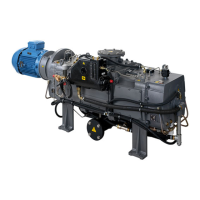
